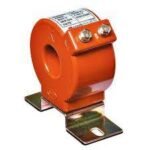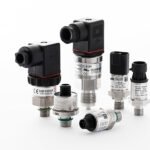An encoder is a sensing device that can provide feedback. They can detect motion and then convert it into electrical signals that can be read by digital devices or a control device in a motion control system, such as a counter or programmable logic circuit. The feedback signal that the encoder sends can be used to determine count, speed, position, or direction. For example, in a cut-to-length application, an encoder that has to measure wheels will communicate to the control device the amount of material that has been fed so that the control device knows when to cut it off. There are many other similar applications.
Working Mechanism
An encoder uses various technologies to create a signal that includes magnetic, mechanical, resistive, and optical, the most common ones. The encoder will provide feedback based on the light interruption in the optical sensing process.
Types of Encoders
Different types of encoders are classified according to their motion control applications. The most common approach to determining their types is to characterize them by the type of movement being monitored, which could be linear or rotational. The three most common types of encoders are linear, angle, and rotatory encoders. Some other types include:
- Linear Encoders
- Rotatory Encoders
- Angle Encoders
- Absolute Encoders
- Absolute and Incremental Encoders
Encoder Sensing Technologies
Various sensing technologies can be utilized within an encoder to detect the motion or position of an object. The most common encoder technologies used in encoders are known as:
- Optical Encoders
- Magnetic Encoders
- Capacitive Encoders
How to Choose the Right Encoders?
When choosing encoders, it is essential to consider the application’s environmental conditions and the desired performance levels. There are a few things that you must consider before you choose to buy an encoder for a specific application.
- The type of motion being monitored
- The parameters being measured
- Is recording of the direction of any concern or not?
- The environmental conditions to which the encoder will be exposed are dust, moisture, shock, vibration, temperature extremes, and caustic or corrosive chemicals.
- Is it possible to do some re-adjustments in the application in the event of power loss?
- The electrical requirements for the system
- The mechanical packaging and design that is best suited for the application.
Why Choose Enrgtech?
Enrgtech offers various components, parts, and other equipment, plus electrical devices that you can use for almost all electrical and electronic applications. We ensure that our products are all checked for the reliability of performance and quality. Our products are delivered on time to your given address worldwide.




